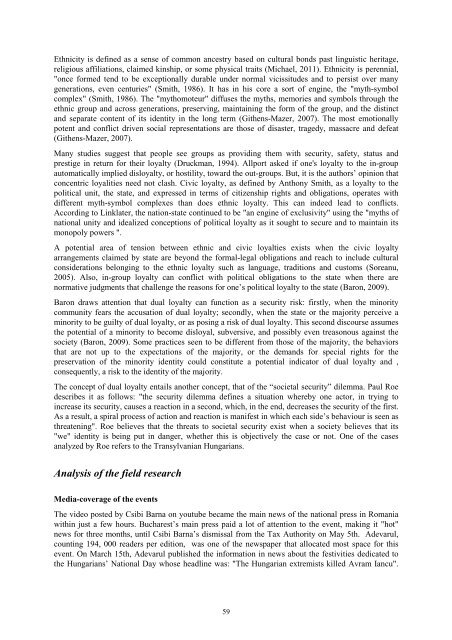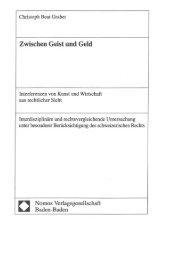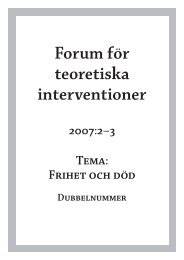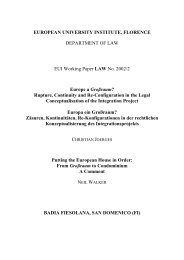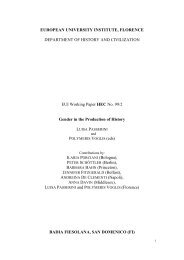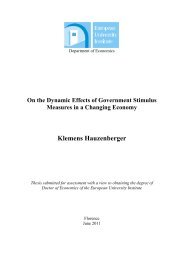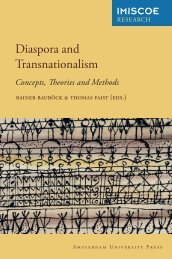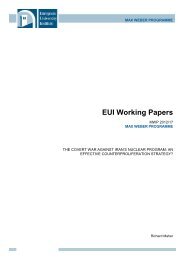Sinziana-Elena Poiana Ioana Lupea Irina-Madalina Doroftei Alina ...
Sinziana-Elena Poiana Ioana Lupea Irina-Madalina Doroftei Alina ...
Sinziana-Elena Poiana Ioana Lupea Irina-Madalina Doroftei Alina ...
Create successful ePaper yourself
Turn your PDF publications into a flip-book with our unique Google optimized e-Paper software.
Ethnicity is defined as a sense of common ancestry based on cultural bonds past linguistic heritage,<br />
religious affiliations, claimed kinship, or some physical traits (Michael, 2011). Ethnicity is perennial,<br />
"once formed tend to be exceptionally durable under normal vicissitudes and to persist over many<br />
generations, even centuries" (Smith, 1986). It has in his core a sort of engine, the "myth-symbol<br />
complex" (Smith, 1986). The "mythomoteur" diffuses the myths, memories and symbols through the<br />
ethnic group and across generations, preserving, maintaining the form of the group, and the distinct<br />
and separate content of its identity in the long term (Githens-Mazer, 2007). The most emotionally<br />
potent and conflict driven social representations are those of disaster, tragedy, massacre and defeat<br />
(Githens-Mazer, 2007).<br />
Many studies suggest that people see groups as providing them with security, safety, status and<br />
prestige in return for their loyalty (Druckman, 1994). Allport asked if one's loyalty to the in-group<br />
automatically implied disloyalty, or hostility, toward the out-groups. But, it is the authors’ opinion that<br />
concentric loyalities need not clash. Civic loyalty, as defined by Anthony Smith, as a loyalty to the<br />
political unit, the state, and expressed in terms of citizenship rights and obligations, operates with<br />
different myth-symbol complexes than does ethnic loyalty. This can indeed lead to conflicts.<br />
According to Linklater, the nation-state continued to be "an engine of exclusivity" using the "myths of<br />
national unity and idealized conceptions of political loyalty as it sought to secure and to maintain its<br />
monopoly powers ".<br />
A potential area of tension between ethnic and civic loyalties exists when the civic loyalty<br />
arrangements claimed by state are beyond the formal-legal obligations and reach to include cultural<br />
considerations belonging to the ethnic loyalty such as language, traditions and customs (Soreanu,<br />
2005). Also, in-group loyalty can conflict with political obligations to the state when there are<br />
normative judgments that challenge the reasons for one’s political loyalty to the state (Baron, 2009).<br />
Baron draws attention that dual loyalty can function as a security risk: firstly, when the minority<br />
community fears the accusation of dual loyalty; secondly, when the state or the majority perceive a<br />
minority to be guilty of dual loyalty, or as posing a risk of dual loyalty. This second discourse assumes<br />
the potential of a minority to become disloyal, subversive, and possibly even treasonous against the<br />
society (Baron, 2009). Some practices seen to be different from those of the majority, the behaviors<br />
that are not up to the expectations of the majority, or the demands for special rights for the<br />
preservation of the minority identity could constitute a potential indicator of dual loyalty and ,<br />
consequently, a risk to the identity of the majority.<br />
The concept of dual loyalty entails another concept, that of the “societal security” dilemma. Paul Roe<br />
describes it as follows: "the security dilemma defines a situation whereby one actor, in trying to<br />
increase its security, causes a reaction in a second, which, in the end, decreases the security of the first.<br />
As a result, a spiral process of action and reaction is manifest in which each side’s behaviour is seen as<br />
threatening". Roe believes that the threats to societal security exist when a society believes that its<br />
"we" identity is being put in danger, whether this is objectively the case or not. One of the cases<br />
analyzed by Roe refers to the Transylvanian Hungarians.<br />
Analysis of the field research<br />
Media-coverage of the events<br />
The video posted by Csibi Barna on youtube became the main news of the national press in Romania<br />
within just a few hours. Bucharest’s main press paid a lot of attention to the event, making it "hot"<br />
news for three months, until Csibi Barna’s dismissal from the Tax Authority on May 5th. Adevarul,<br />
counting 194, 000 readers per edition, was one of the newspaper that allocated most space for this<br />
event. On March 15th, Adevarul published the information in news about the festivities dedicated to<br />
the Hungarians’ National Day whose headline was: "The Hungarian extremists killed Avram Iancu".<br />
59


